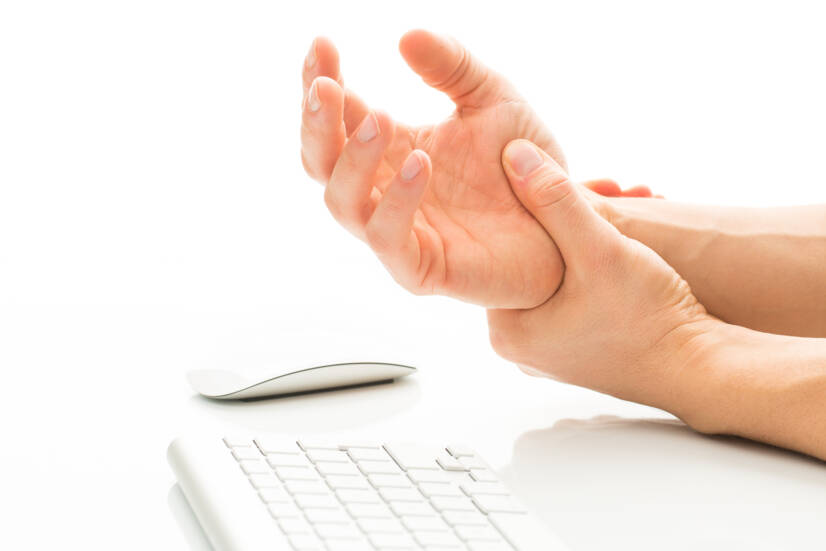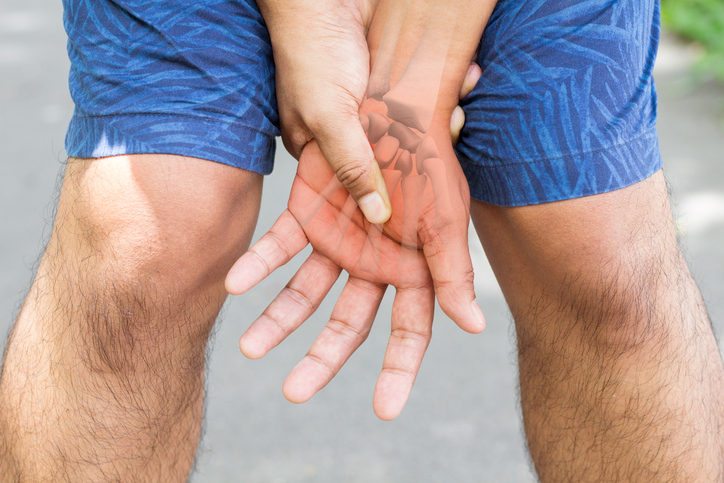- Burton, C; Chesterton, LS; Davenport, G (May 2014). "Diagnosing and managing carpal tunnel syndrome in primary care". The British Journal of General Practice. 64 (622): 262–3. doi:10.3399/bjgp14x679903. PMC 4001168. PMID 24771836.
- "Carpal Tunnel Syndrome Fact Sheet". National Institute of Neurological Disorders and Stroke. January 28, 2016. Archived from the original on 3 March 2016. Retrieved 4 March 2016.
- American Academy of Orthopaedic Surgeons (February 29, 2016). "Management of Carpal Tunnel Syndrome Evidence-Based Clinical Practice Guideline". Archived from the original on March 30, 2020. Retrieved March 5, 2016.
- Bickel, KD (January 2010). "Carpal tunnel syndrome". The Journal of Hand Surgery. 35 (1): 147–52. doi:10.1016/j.jhsa.2009.11.003. PMID 20117319.
- Padua, L; Coraci, D; Erra, C; Pazzaglia, C; Paolasso, I; Loreti, C; Caliandro, P; Hobson-Webb, LD (November 2016). "Carpal tunnel syndrome: clinical features, diagnosis, and management". Lancet Neurology (Review). 15 (12): 1273–84. doi:10.1016/S1474-4422(16)30231-9. PMID 27751557. S2CID 9991471.
- Shiri, R (December 2014). "Hypothyroidism and carpal tunnel syndrome: a meta-analysis". Muscle & Nerve. 50 (6): 879–83. doi:10.1002/mus.24453. PMID 25204641. S2CID 37496158.
- Graham, Brent (December 2008). "The Value Added by Electrodiagnostic Testing in the Diagnosis of Carpal Tunnel Syndrome:". The Journal of Bone and Joint Surgery-American Volume. 90 (12): 2587–2593. doi:10.2106/JBJS.G.01362. ISSN 0021-9355.
- Boyer, Martin I. (October 2008). "Corticosteroid Injection for Carpal Tunnel Syndrome". The Journal of Hand Surgery. 33 (8): 1414–1416. doi:10.1016/j.jhsa.2008.06.023.
- Huisstede, Bionka M.; Randsdorp, Manon S.; van den Brink, Janneke; Franke, Thierry P.C.; Koes, Bart W.; Hoogvliet, Peter (August 2018). "Effectiveness of Oral Pain Medication and Corticosteroid Injections for Carpal Tunnel Syndrome: A Systematic Review". Archives of Physical Medicine and Rehabilitation. 99 (8): 1609–1622.e10. doi:10.1016/j.apmr.2018.03.003.
- Brooks, JJ; Schiller, JR; Allen, SD; Akelman, E (Oct 2003). "Biomechanical and anatomical consequences of carpal tunnel release". Clinical Biomechanics (Bristol, Avon). 18 (8): 685–93.
Carpal Tunnel Syndrome: Causes, Manifestations and Treatment

Photo source: Getty images
Most common symptoms
- Muscle Pain
- Pain that Radiates into the Shoulder
- Muscle stiffness
- Defence
- Swelling of the limbs
- The Island
- Swollen fingers
- Tingling
- Shooting pain in fingers and toes
- Muscle weakness
Show more symptoms ᐯ
Treatment of carpal tunnel syndrome: Medications, ointments, exercises, surgery
Show moreCarpal Tunnel Syndrome is treated by
Other names
Syndroma canalis carpi, CTS












